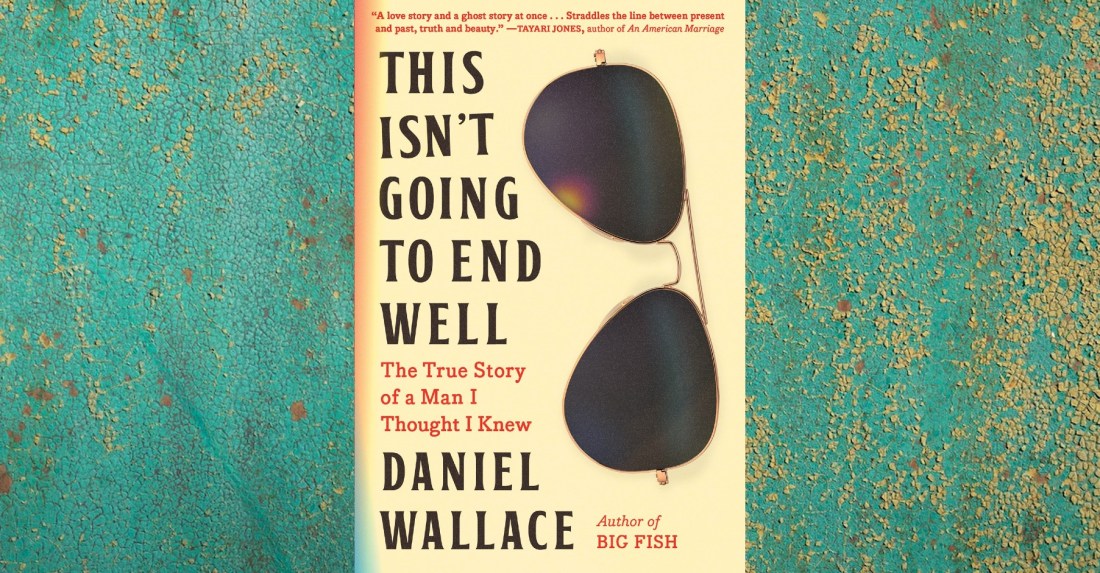Representing another’s life is a daunting task, especially when it is someone we have loved and admired and once wanted to become and that person chooses to end their life, the very life we have emulated. It is this tension between idealization and betrayal that Daniel Wallace, author of Big Fish and other novels, captures in This Isn’t Going to End Well: The True Story of a Man I Thought I Knew, his first nonfiction work.
In his memoir, Wallace portrays his brother-in-law, the writer and cartoonist William Nealy, as both a genius and a ne’er-do-well. Raised in Birmingham, Alabama, Nealy was never one to play by rules, dropping out of high school but still managing to be admitted to college, eventually marrying Wallace’s sister Holly over their family’s objections.
Nealy was best known for his groundbreaking book Kayak, which combined paddling instruction with parodies of whitewater enthusiasts. He transformed his maps, illustrations and commentaries into works of art. He had an uncanny talent for solving things. Then, at the age of forty-eight, Nealy took his own life.
Wallace’s book isn’t as much about Nealy’s life as his own. Seven years younger than Nealy, Wallace hero-worshipped his future brother-in-law, following his example through acts of adolescent defiance, daredevil adventures and forays into alcohol and drugs. In a scene that resurfaces throughout the book, Wallace recalls, at age twelve, watching Nealy jump twenty-five feet off the roof of his family’s house into a swimming pool. “Jumping off roofs was something you did but didn’t talk about having done, because that wasn’t why you did it.” Nealy’s rashness leads to more death-defying stunts on rivers, creating “a blueprint for the kind of life he wanted to live: that a day not spent close to Death, preferably on or near the water, was a day lost forever.”
Part I of the book focuses on Wallace’s idolization of his future brother-in-law and wanting to become him. “I knew I wasn’t his friend. Not really, not yet,” Wallace writes. “But it was a word I was hoping to grow into.” Wallace’s emulation of Nealy fuels him to take risks himself, rejecting a comfortable position in his father’s business and becoming a writer. At first, Wallace’s learning from Nealy’s recklessness seems to have paid off. It is only after Nealy commits suicide, leaving Wallace’s arthritic sister Holly, who became dependent on Nealy, to fend for herself, that Wallace’s blind admiration turns to anger and doubt.
In Part II, after Wallace begins pouring over twenty-three years’ worth of Nealy’s journals, he discovers Nealy’s true self, a “trick mirror,” a tormented soul who could never show his true self to the world. “I MUST NOT LET THEM SEE WHO I REALLY AM,” Nealy wrote. Nealy’s reckless abandon, his many “immortality projects” and even his devotion to Holly, were ways of directing his vision “outward, away from himself.”
Wallace does not overshare the contents of the journals, in part because they are as scattered and opaque as Nealy’s life. Much of the journals and other writings consisted of lists. Wallace even discovers a “list of shame” among the papers. “There was almost no commentary, just the facts, one delivered after the other in austere self-flagellation, secrets that he would not, could not even commit to his journals.” Though some of the details Wallace discloses are shocking, Wallace does not expand or speculate beyond what Nealy himself reveals.
Reading through his brother-in-law’s papers helps Wallace crystalize both his admiration of the self that Nealy chose to show the world and his bewilderment over the one Nealy hid. Wallace recalls how much he admired Nealy’s handwriting and had tried to mimic it. “I copied him, but not syntactically, or in his style, the way I would later try to copy Carver or Malamud or Cheever: I wanted to write with the literal shapes of the letters he made.” But beneath the letters, Nealy’s “shadow life” emerges. He sees how Nealy was drawn “inescapably inward, and there was almost nothing good for him to see in there,” making his suicide seem like almost an inevitable conclusion. “[T]he question isn’t why he killed himself,” Wallace reflects. “The question is why did it take him so long? His journals must be the longest suicide note in the history of the world.”
The journals become Wallace’s own salvation. He realizes that unlike William Nealy, Wallace is not one man for the world and another for himself. “I had escaped the influence of my mentor, the man I wanted to become. I harbored few dark secrets; I had no shadow life.”
The writing drifts in time and place, but not in a disruptive way. By interweaving Wallace’s reflection with incidents from their past, Wallace shows how Nealy’s rash decisions and occasional obsessions come to make sense. Each chapter contains one or more of Nealy’s graphics, often wryly humorous, instilling a bit of comic relief into an otherwise somber and gripping narrative. Though Wallace shows his anger and pain, the memoir is sensitively and respectfully compiled.
What we learn from Wallace’s memoir is not that introspection and secret places in our minds are inherently wrong, but that when they begin to define one’s self, especially a self hidden from the world, the consequences are damaging. We can become “victims of our own art,” creating a self the world cannot penetrate, a personal Mr. Hyde. Given this evolution, Wallace poses the daring question of whether Nealy’s suicide should be a surprise, for is it not inevitable that this version of ourselves must somehow come to an end? It is a lesson that haunts the writer yet gives him a sense of solace. “Without William,” Wallace writes, “ I wouldn’t be who I am, but I am not him, which is a blessing.”
NONFICTION
This Isn’t Going to End Well: The True Story of a Man I Thought I Knew
By Daniel Wallace
Algonquin Books
Published April 11, 2023


